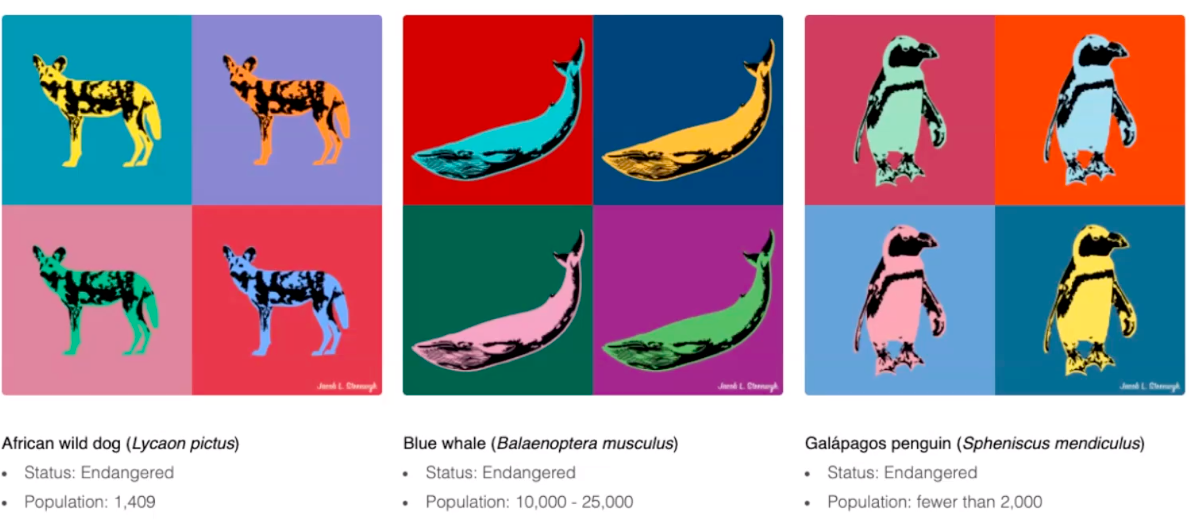Art with amphibians, algorithms and advocacy
- Miquéla Thornton

- Jun 23, 2021
- 4 min read
Updated: Jun 24, 2021
To place science and art in separate binaries, unable to mix, is to limit the full potential both disciplines possess.
On June 14, Vanderbilt graduate student in the Department of Biological Sciences Jacob Steenwyk led an ArtLab workshop titled “The Junction Between Art and Science,” in which he overviewed his personal relationship with both science and art, how art relates to him as a researcher and his path as an artist, all experiences he employed in explaining the bridge between science and art, and the value in bringing the two together.
Steenwyk, who comes from a family of artists, said he’s always been the odd one out with “the science stuff.” However, after dabbling in the arts, initially drawing on PowerPoint, he uncovered a passion and began finding ways to connect his two interests. When he entered grad school at Vanderbilt, he joined the Antonis Rokas Lab where, in addition to research, he created lab posters detailing Rokas’s branches of study: evolutionary relationships between organisms, the evolution of human pregnancy, and Steenwyk’s focus: the evolution of yeasts and molds.


In his own research, Steenwyk hones in on the microbial domestication of yeast. In the illustration to the left, Steenwyk and his friends created a graphic for a lecture he gave that takes this literally: yeast as a domesticated pet. He described the graphic as a way in which he was able to pull people in, thus situating art as a “vehicle for information about complicated topics,” to reemploy the words of last week’s workshop speaker, Eve Moll, on the topic of scientific journal cover art.
However, Steenwyk’s work doesn’t stop at supplementary illustrations. He also creates digital art in a more traditional sense, while raising awareness for environmental issues. As a former ArtLab fellow, he created “Sun Frogs,” to bring attention to the amphibian apocalypse, a rapid decline in 501 frog and salamander species across the globe. This amphibian death is due to a microscopic, invasive organism called chytrid fungus. It develops on and rips the frogs’ skin, thus disrupting their breathing process. The frog can only combat this through self-medication via sunbathing. The UV light is able to kill the chytrid. So naturally, in his art piece, the background the frogs lay on is the color spectrum of sunlight.

Also as an ArtLab Fellow, he created “Yeast Portrait:” budding yeast in the style of Andy Warhol. “The whole idea was to borrow elements from the art world and the science world and just kind of smash together.” He spoke about how both artists and scientists can look at it side-by-side, appreciating different elements of the art. This appreciation may be the pop-art influence of Andy Warhol or the significance of the budding yeast and its contributions to our planet’s ecology. To Steenwyn, this ultimately allows the two worlds to collide.
The combined ideas behind “Yeast Portrait” and “Sun Frogs” catalyzed Steenwyk’s art shop: Sciart. 100% of profits go towards global conservation efforts. While not all, his main subjects are endangered organisms.
“The point is to use art to raise awareness and to, in a very fantasized sense, immortalize these endangered species.”
Additionally, Steenwyk’s original 2019 budding yeast portrait later appeared on a 2021 cover of Yeast, along with a perspective article of his, emphasizing how the arts and sciences as a whole offer much more than the sum of their parts.
“I strongly believe that when you combine the arts and sciences, you get something far more enriching than when they are divided,” Steenwyk said. The opportunity soon allowed him to design three more journal covers.
Recently, Steenwyk has been taking his science art in a new, experimental direction: making abstract art with algorithms. As he describes it, unlike his mindful work, this is about “giving

up control.” To do this, he wrote an algorithm that takes a set of numbers and runs them through a very complex line. It does this and saves the data roughly ten million times. After the number comes out of the algorithm, he gets a picture made of linear lines. The goal was to remove himself from the artistic process and allow the algorithm to be the artist.
Essentially, it puts the art in the control of a scientific tool, not only shifting the idea of what art can be but expanding the reason for being scientific tools have, as if to say, scientific tools are not confined to the realm of research, and art is not confined to traditional mediums.
Similarly, Steenwyk has begun allowing computers to make his art. Pictures often have a pdf of random text attached to them that is only meant for computers to read. Steenwyk wondered what would happen if he deleted portions of it. Would the computer still be able to interpret the hidden message? To his surprise, as long as he didn’t delete vital lines, the computer was able to read the text and produce an altered image. There is no method to the portions Steenwyk deletes, and thus, this time the art is put into the hands of artificial intelligence. The images are regurgitated with different textures, shapes and hues, and to Steenwyk, they are emotionally evocative. Much like his father’s art, Steenwyk says these pieces ask the question of what beauty really is. In these, that question is not only considered through the human gaze, but it is also situated in the perception of the computer.















Comments